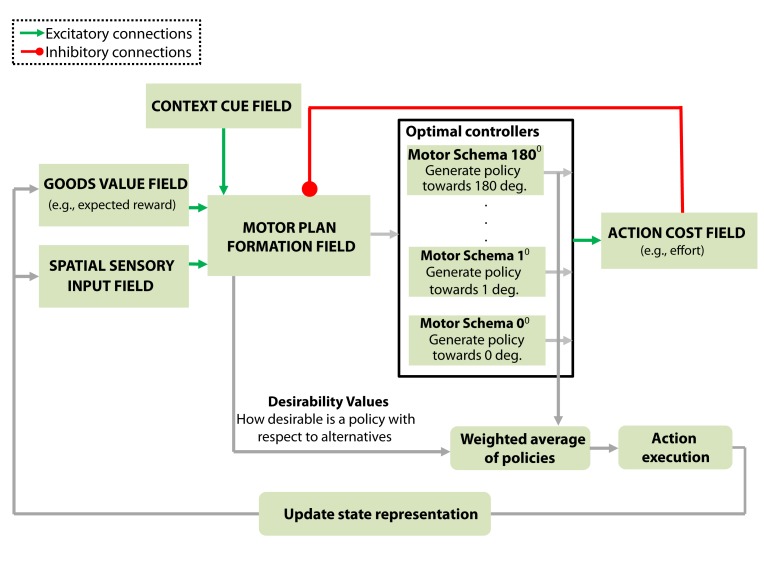Fig 1. Model architecture.
The core component of the model is the motor plan formation field that dynamically integrates information from disparate sources. It receives excitatory inputs (green lines) from: i) the spatial sensory input field that encodes the angular representation of the alternative goals, ii) the goods-value field that encodes the expected benefits for moving towards a particular direction and iii) the context cue field that represents information related to the contextual requirements of the task. The motor plan formation field also receives inhibitory inputs (red line) from the action cost field that encodes the action cost (e.g., effort) required to move in a particular direction. All this information is integrated by the motor plan formation field into an evolving assessment of the “desirability” of the alternative options. Each neuron in the motor plan formation field is linked with a motor control schema that generates a direction-specific policy π j to move in the preferred direction of that neuron. The output activity of the motor plan formation field weights the influence of each individual policy on the final action-plan (see “Model architecture” in the results section for more details).

